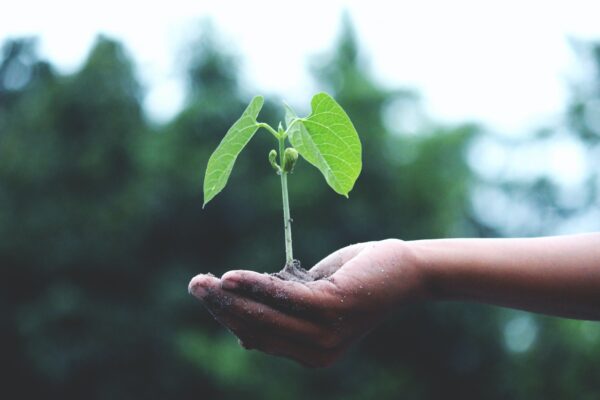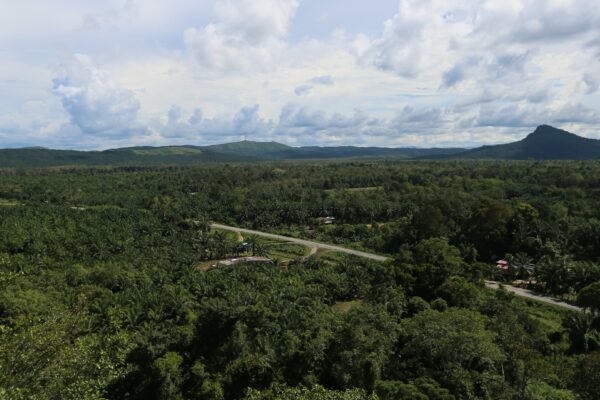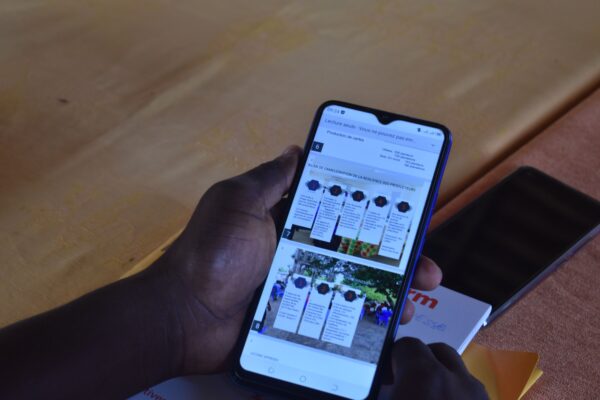The Bornean elephant is in trouble.
Since January 2019, TFT has become Earthworm Foundation.
The Bornean elephant is in trouble. Classed as endangered by the International Union for Conservation of Nature, its habitat is surrounded by palm oil plantations. Because of this, these creatures regularly have run-ins with farmers and communities, which have on occasion proven fatal for both sides. Mostly, however, incidents remain a nuisance, but for smallholder farmers it can be a costly one.
It doesn’t have to be this way, says Dr. Nurzhafarina Othman, an expert on the Bornean elephant who is helping us solve human-elephant conflict in the Ulu Muanad community through our Rurality programme.
“To ensure the survival of elephants, people need to understand that we need to co-exist,” she says.
For Nurzhafarina it is a question of building tolerance among communities and helping them to understand that elephants are coming onto their plantations as some of their own land has been lost. It’s also partly due to simple biology. The loner males, she says, tend to wander.
“When community members have this knowledge, they don’t feel so scared all the time,” Nurzhafarina adds.
But she also suggests caution as there are no quick or easy fixes.
“We can reduce the conflict, but I can’t say that there will be no more conflict because then I’d be telling you lies,” she warns.
Together with its partners in Sabah, TFT is working with local communities to help them find solutions to these problems, to improve their lives and ensure the survival of Borneo’s elephants well into the future. So far, a training on elephant monitoring and biology has been conducted and a seven-person strong monitoring group has been formed in Ulu Muanad.
TFT caught up with Nurzhafarina to hear her thoughts on the project’s progress and her vision for the future.
Why are elephants using palm oil plantations?
Elephant populations in Sabah are found in three populations. Their habitat is highly degraded and surrounded by palm oil plantations. There is just no way we can restrict the elephant or limit their movements. In Lower Kinabatangan for example, the habitats are not all suitable for the elephants. It can be swampy and in the wet season, the elephants have to go to higher ground. Most of these areas are on oil palm plantations.
How much of a threat do elephants pose to smallholders and communities in Ulu Muanad?
In Ulu Muanad they have only recently faced conflict. They don’t know how to react during conflict events. When they see one elephant they might feel afraid and they don’t know how to drive it away. So, it can create a danger for people and elephants. People who don’t know the elephants’ behaviour or biology might just harass them, and the elephants may chase them. It will take some time for them to learn.
How do farmers and community member feel about the elephants?
It’s common to have people who dislike elephants. They only have a small amount of land to plant their trees on, so they need to maximise their yield from the plants. With the frequent presence of elephants in their vicinity, they won’t not be able to achieve this.
But I can see that the younger generations understand what the threats are to the elephants and why they come onto their plantations. They want to do their best to protect them, while trying to maximise their yield.
For example, the participants who went to our training understand that the elephants need some place to live. When they have the knowledge of how to handle the elephants’ presence in their vicinity, they don’t feel so scared all the time. After the training, they went back to their village and shared their experience and knowledge with other people, I think it’s very positive.
We want them to understand that there is no one solution for human-elephant conflict. You have to use different methods and know when and where is the best time to apply them.
Tell us about the Human-Elephant Project?
To ensure the survival of elephants, people need to understand that we need to co-exist. There is no way that we can say that this land just belongs to elephants or this land only belongs to people. We must strive to share. The people who live in communities like Ulu Muanad are the ones who will be facing all the dangers and always live in worry. Therefore, we must put all efforts to help them live side by side with this megafauna.
First, of all we need to increase the tolerance of people. To increase the tolerance, we need to identify and quantify the trends of human-elephant conflict. It depends, for instance, on whether the elephants only come during a particular season or at a certain time of the year or not. Once we know the trends we can plan for an intervention.
TFT and Rurality realised they don’t have experience or knowledge of how to solve the elephant conflict situation in Ulu Muanad, so they contacted us. After almost one and a half years of discussing what’s needed and visiting the study site, the local community and the geographical area, we came up with several strategies.
What’s been the greatest success so far?
I can see that the local communities, if they have any problems they will now speak to us, they will not take their own action without discussing the pros and cons of their action. If we tell them ‘to be extra patient while we figure out the best intervention they are willing to corporate. I guess that’s the biggest success that we achieve so far.
We also hope to be able to talk to the bigger companies in the oil palm industry. We know that a lot of local people’s plantations are in the middle bigger players’ lands. We hope that these bigger players will want to cooperate, helping the local communities set up electric fences and things like that. We still need a few more years to achieve bigger results.
How important has collaboration been?
The communication between stakeholders is very important. Sometimes without good communication, it can create conflict between stakeholders and when that happens even simple actions, you can’t do them. The partnership that we have in this project is very good. We make sure that everyone is always on the same page.
What’s your biggest hope for smallholders and community members around Ulu Muanad?
Elephants are one of the main attractions for people coming to Sabah, therefore it is one of the most important economic resources. Our government speaks a lot about wildlife and natural resources at the international level. We’ve told the world that we are a conservation leader. To do that we need to help the local community because they need to continue their life. But at the same time, they lack the resources to deal with elephant conflict.
So, I hope that we can make community members aware that we understand their situation and that we want to help them. They know the elephant better as they live side by side with them, therefore they know the best way to co-exist with these elephants. Everyone can contribute towards the conservation of Bornean elephant, not only NGOs, not only the Sabah Wildlife Department.
Can elephants and people co-exist?
Yes, totally! I think there is a trend, you know, of elephants coming to the people’s plantations. For example, we usually see the males, who are more adventurous because biologically they live on their own. They have to move along all the time, so usually they use a bigger space. If we can make people understand that it is the biology of the elephant to do that, then hopefully we can increase the tolerance of people.
Palm oil plantations are now going to other continents. We need to start working with the palm oil players. So that they understand they need to take precautions before they start their plantations. Basically, wildlife is not only the responsibility of the wildlife department or NGOs, everyone must play their role. Even people who live in the city can also play their part. So, wildlife conflict is not really a conservation problem, it’s a development problem. People who develop need to take responsibility of avoiding conflict.
We are working HUTAN-KOCP, Danau Girang Field Centre (DGFC) and other partners, including Dr. Nurzhafarina Othman, a Borneo elephant expert with Seratu Aatai, to solve human-wildlife conflict in Sabah, Malaysia.


